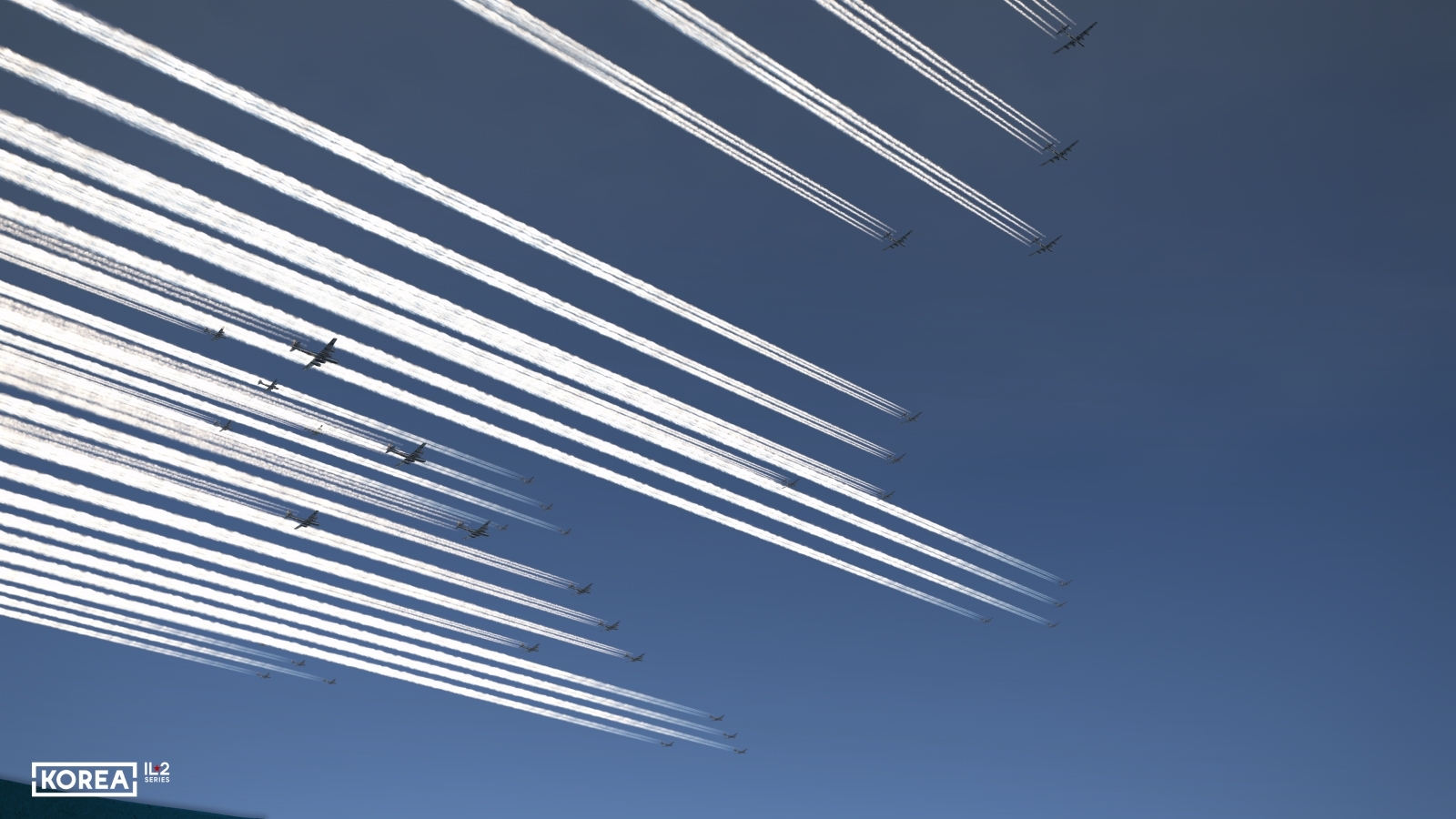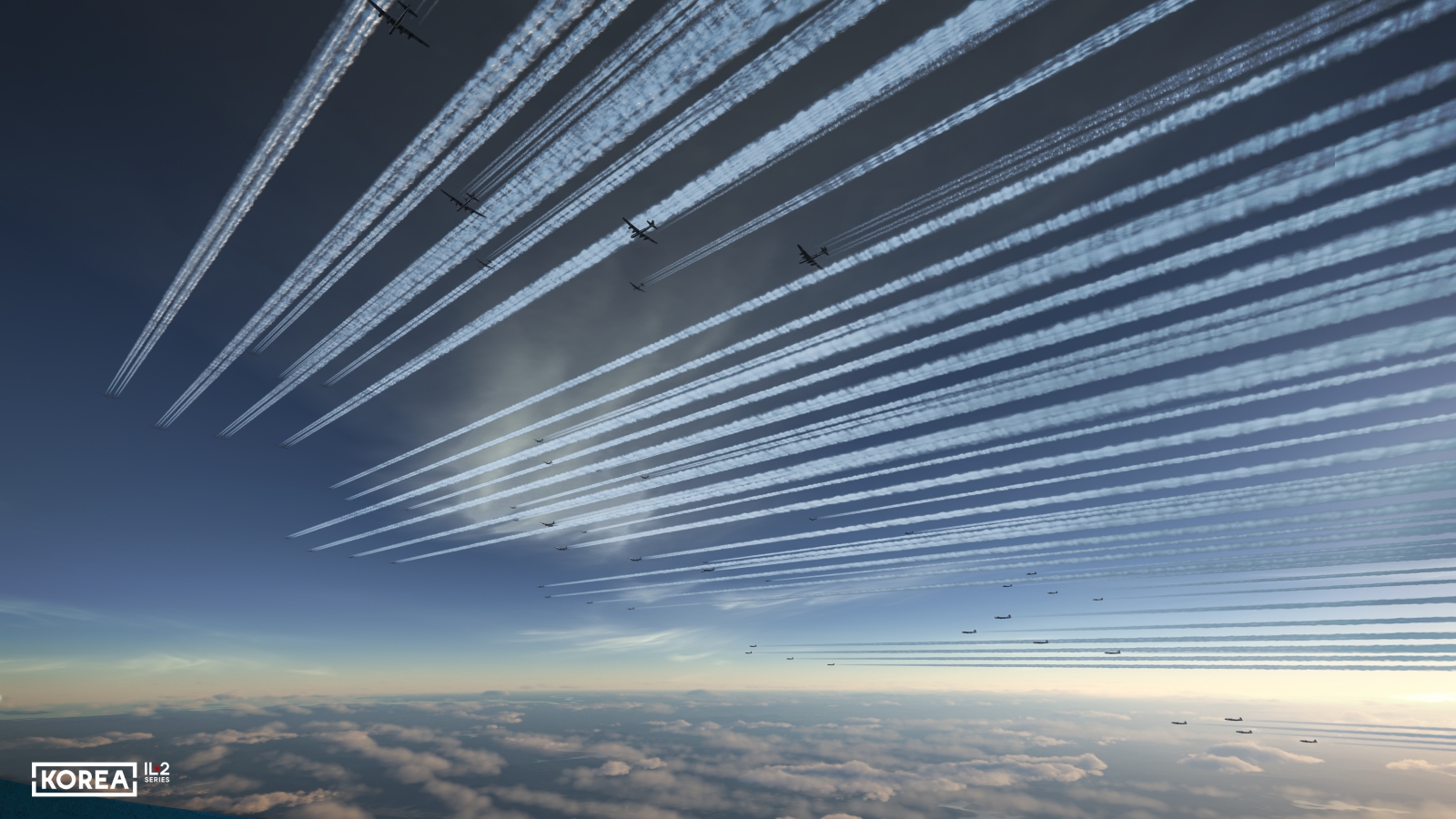Dev Blog #34
Hello, comrades!
Today, we are going to discuss something that goes somewhat against our usual uncompromising approach. In single-player air combat simulations, we have always taken a radical position: the enemy, even if it is AI, must control the aircraft with the same degree of accuracy in flight physics and basic systems as the player. This approach has really paid off. Fighting against a "real" aircraft rather than a bot that casually shrugs off the laws of physics, as usually happens in flight sims, is much more interesting and exciting for the player because it’s important to know that you’re on equal terms with your opponent. However, this approach has a downside: calculating a detailed physical model of an aircraft requires a lot of computing resources. This reduces the number of aircraft that can participate in combat while maintaining a high frame rate.
Today, we are going to discuss something that goes somewhat against our usual uncompromising approach. In single-player air combat simulations, we have always taken a radical position: the enemy, even if it is AI, must control the aircraft with the same degree of accuracy in flight physics and basic systems as the player. This approach has really paid off. Fighting against a "real" aircraft rather than a bot that casually shrugs off the laws of physics, as usually happens in flight sims, is much more interesting and exciting for the player because it’s important to know that you’re on equal terms with your opponent. However, this approach has a downside: calculating a detailed physical model of an aircraft requires a lot of computing resources. This reduces the number of aircraft that can participate in combat while maintaining a high frame rate.
For example, a four-engine bomber requires about four times more computing resources than a single-engine fighter. Massive bombing raids characterized the Korean War. Up to 58 B-29 bombers took part in the "Black Thursday" main strike group alone. Despite the complexity of the required calculations, the behavior of such large machines in the air is not particularly varied. Typically, they fly horizontally and do not perform complex maneuvers. Of course, we really wanted to recreate this armada for you in our new project.
To accomplish this, we created a simplified physical model of the aircraft that could be used in such scenarios. In addition to the full-fledged physical model of the B-29 bomber for ordinary, less massive scenarios, we are also implementing a simplified physical and visual model of the B-29 (the two are closely interrelated). A formation of 50 aircraft puts a strain not only on the processor but also on even the most powerful modern graphics cards. Externally, the model of such a heavy, simplified aircraft is as detailed and high-quality as those of conventional ones. However, it has a simpler damage model inside. This simplifies its structure and makes it possible to simulate such a large bomber formation.
The simplified model will not accurately and precisely reproduce takeoff and landing modes, stall modes, or behavior during complex maneuvers, but this is not required for our intended use—in a mass formation of bombers, an accurate reproduction of the aircraft’s basic characteristics is sufficient. Nevertheless, this is not a "rail" model or a prop that merely resembles a plane — the flight of such a simplified aircraft still results from calculating the balance of forces acting on it. These forces include aerodynamic forces acting on the main elements of the airframe, thrust, and gravity. The engine model in a simplified aircraft is generalized but still allows adequate adjustment of the main flight modes. As mentioned above, the damage model includes some elements found in conventional, detailed aircraft, with the new damage detail standard discussed earlier in the Dev Brief video about aircraft systems. However, the result is sufficient for attacking such an aircraft, though not for flying it.
Thanks to the above measures, we can now handle more than 200 AI aircraft in the air, up to 50−60 of which can be in close formation. Currently, this only applies to the B-29 bomber, but before its release, we plan to consider implementing fighter cover for these simplified bombers in a similar manner. In a mass battle at high altitudes, with the proper level of tuning, this physical model may also be sufficient for fighters. However, this is still an open question that we will continue to investigate because maneuverable combat with fighters requires more precise control. We will not take such a step until we are convinced that we can achieve identical behavior to the full model with a simplified enemy model. If successful, our simulation may depict not only an attack on a large bomber formation but also massive air battles involving dozens of fighters, both detailed and simplified. This may happen a little later than the release or perhaps even beforehand—time will tell.
In conclusion, we emphasize that we are not abandoning our core approach to implementing air combat with AI opponents. Most sorties will take place in clashes with AI aircraft that have a detailed flight model. All the smallest nuances will be implemented, just like with the player aircraft. We envision the future development of our simulator as a combination of these approaches. The pilot’s artificial intelligence, and how it controls detailed or simplified aircraft, is also being refined. These changes will affect various aspects of AI, from the most basic to the most specific. This work is already underway, and we will share more information about our progress in this area soon.
Stay tuned for updates! Stay in touch!
Stay tuned for updates! Stay in touch!









